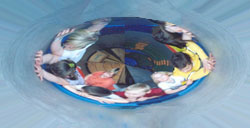The convergent validity of four fine motor assessment tools in 5 to12 years old children
The aim of this longitudinal study was to evaluate the convergent validity of four fine motor assessment tools in 5 to 12 year old children. Other research goals were the investigation of age and gender differences concerning fine motor skills in this population. In this longitudinal study, children from the last year of nursery school were followed till their sixth grade. During these 7 years, four fine motor assessment tools were administered: The Movement-ABC, the Punktiertest für Kinder, the Epreuve de pointillage and the Gibson Spiral Maze. Generally, low correlations were found between the four assessment tools. The correlation between the Epreuve de pointillage and the Punktiertest für Kinder was the highest. The lowest correlations were found with the Movement-ABC. Secondly, significant sex differences were observed. Improvements in fine motor skills with age were noted, especially in the lower grades. Finally, girls performed significantly better than boys on the fine motor assessment tools. The results of the Epreuve de pointillage and the Punktiertest für Kinder indicate that they both measure a similar aspect of fine motor skills but different aspects were measured in the other instruments. Overall, more research on this topic is needed.
The convergent validity of four fine motor assessment tools in 5 to12 years old children Read More »






